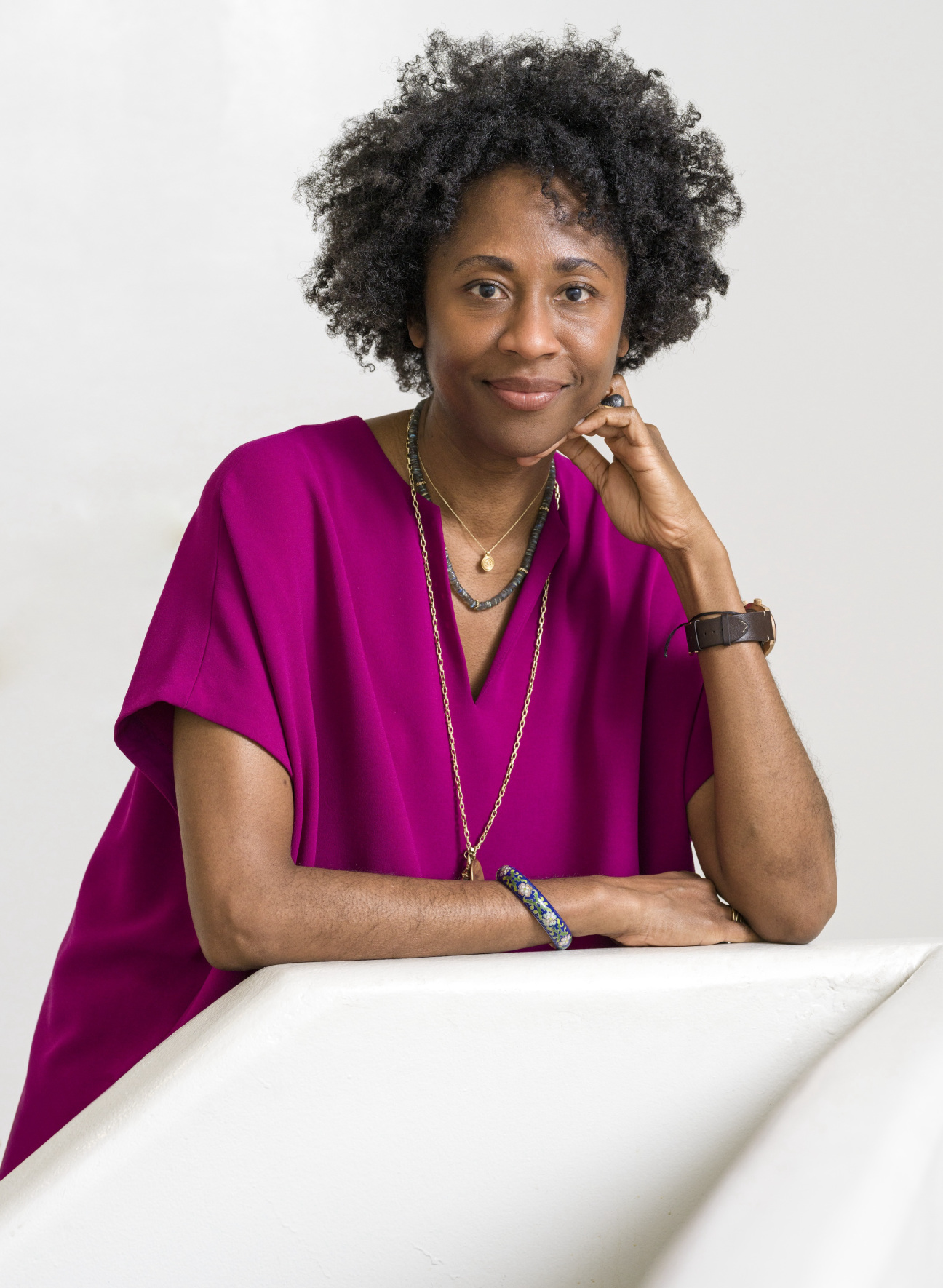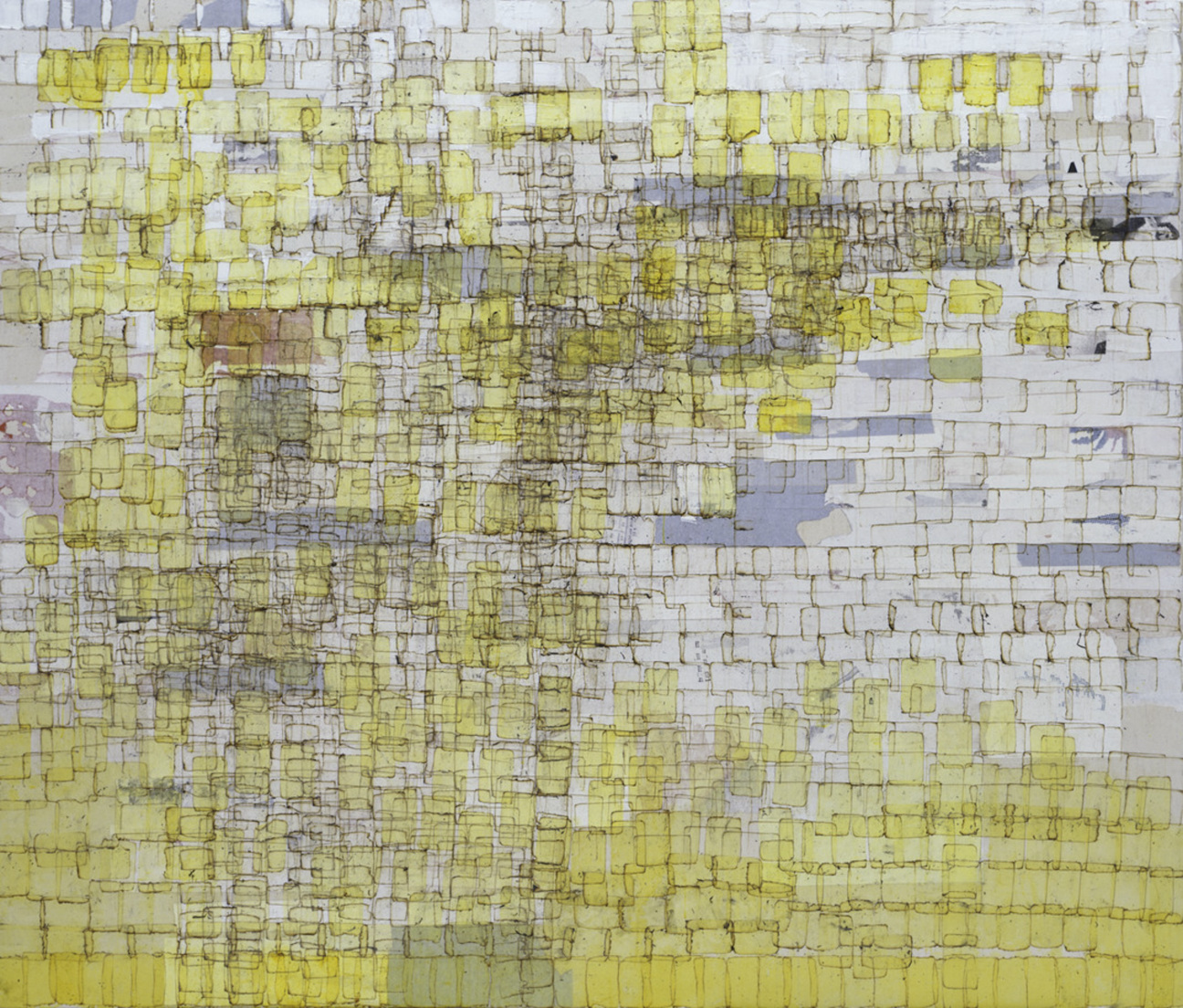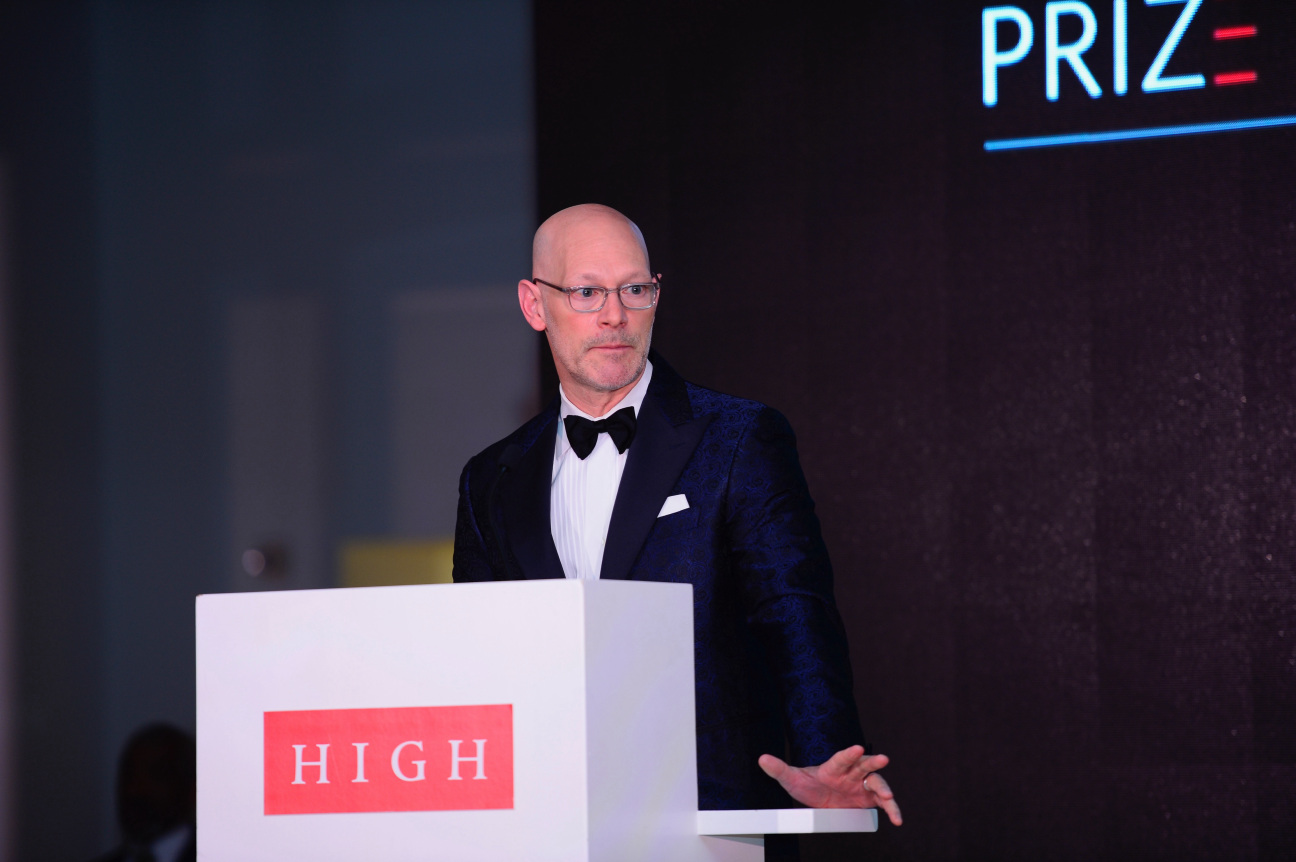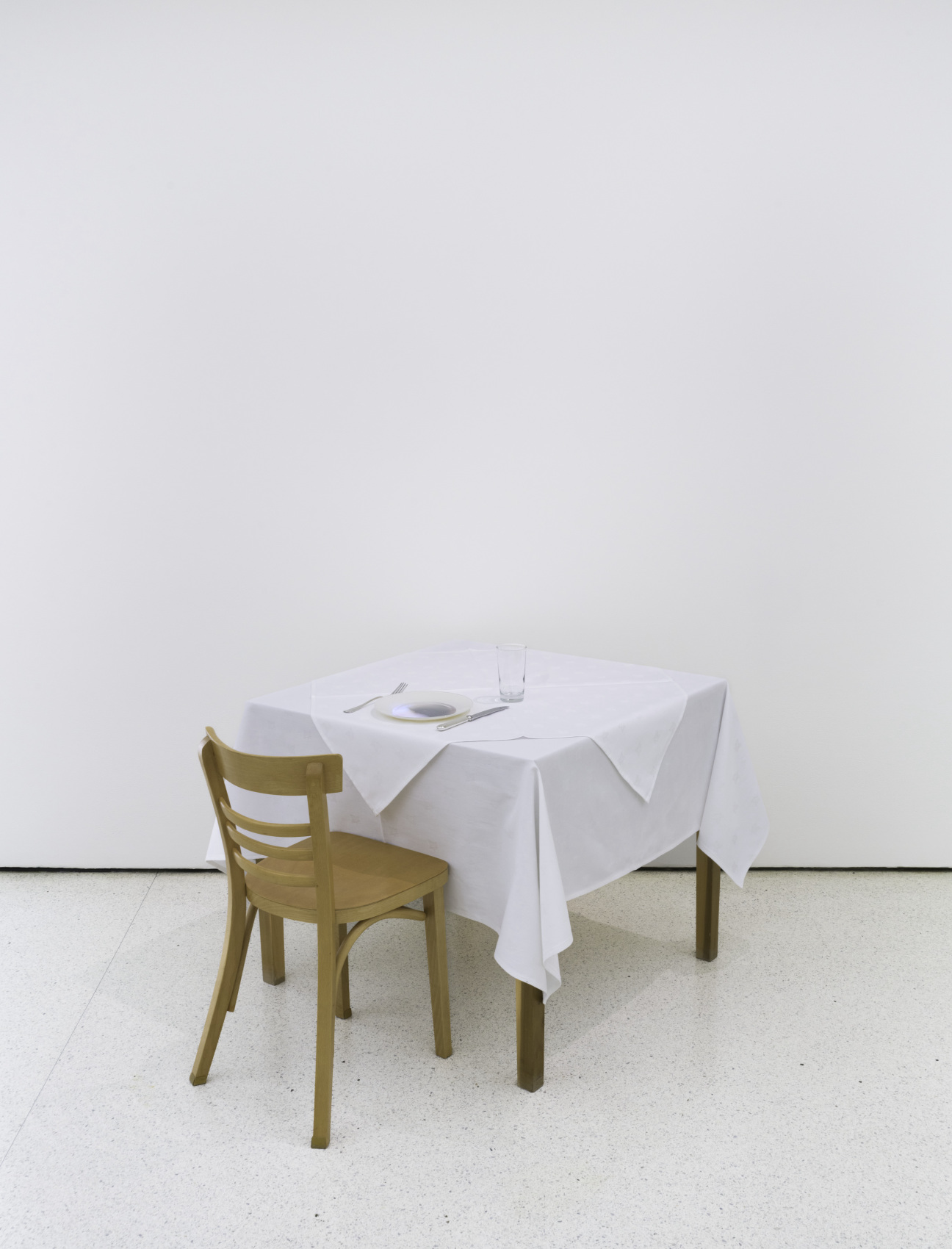
As the latest recipient of the Driskell Prize, curator Naomi Beckwith is joining an already prestigious group that includes names like Mark Bradford, Amy Sherald, and Ebony G. Patterson. The High Museum of Art’s premiere award, which recognizes achievements in African American Art and Art History, is both endowed by and built on the legacy of artist and scholar David C. Driskell, who helped establish Black art as a distinct field within art history.
Beckwith is the deputy director and Jennifer and David Stockman chief curator of the Solomon R. Guggenheim Foundation and Museum and has long been a champion of Black artists and multidisciplinary practices. Her recent exhibition “By Way Of: Material and Motion in the Guggenheim Collection,” which opens March 15, focuses on ways artists embraced making work outside the studio post-World War II and how that’s influenced contemporary artists like Mario Merz, Rashid Johnson, and Mona Hatoum.
Rand Suffolk, museum director for the High, recognizes that crafting a great legacy means engaging with those shaping it. Since taking the position in 2015, Suffolk has kept a continued focus on community building, taking the initiative to reduce museum admission fees and expand the collection by more than 1,500 works. The Driskell Prize—both the auspiciousness and responsibility of it—is yet another valence through which Suffolk wants to mold the reputation of the High into one that reflects the community served by the institution.
Ahead of the Driskell Prize Gala, Beckwith and Suffolk sat down with CULTURED to unpack Dr. Driskell’s legacy, drastically different decision making, and community responsibility.
Naomi Beckwith: My initial thought when you called was you were about to ask if I would sit on another jury. It wasn't even top of mind that I'd been nominated, let alone an awardee this year. Many of the people who've been awarded this prize are friends. It's wonderful to be considered in a real generational cohort of incredible thinkers and scholars.
Rand Suffolk: This is my eighth or ninth iteration participating with the Driskell Prize. One of the things that I love about it from an institutional and impact standpoint is the growing list and the character and quality of the alumni—how 10 years from now, there [will be] 30 past recipients alive and doing incredible work.
Beckwith: You've got an incredible brain trust, not just with the scholars but also with the artists, who are incredible thinkers and writers in their own right. I do think there's a way in which we could be of value: At some point all these people are just given a topic to think about, some thorny issue to unknot, especially [one] that is deeply thinking-based, not market-based.
It's also great to be recognized for a prize named after someone who was a thinker and doer. I've always admired Dr. Driskell for being an artist as much as he could analyze a painting. He was very invested in a public practice—in filmmaking, documentaries, art and educational advising. He believed in being in the world as much as grainy research.

Suffolk: We were given this incredible opportunity to have him shape our thinking about the importance and role of African American art in our history in a way that perhaps we privileged over many peer institutions. That, in retrospect, has become part of the DNA at the High Museum of Art and how we choose exhibitions and the acquisitions we make.
Beckwith: Dr. Driskell’s legacy has to live in multiple ways inside the institution; it is the prize, but it's also acquisitions and scholarship. That has transformed the High in an incredibly meaningful way. Have you observed changes inside the institution from this Driskell gift and charge?
Suffolk: Fifty key acquisitions have been made possible over the years based on the Driskell endowment funds. Those funds are helping us acquire a brand new Hank Willis Thomas quilt that will dovetail with a major initiative we're putting forward on Black quilts and contemporary art. If you look at what we've done over the past eight years, those funds have had a profound impact on our ability to have a very diverse exhibition schedule and ensure that the right voices are fully integrated year in and year out.
We've started to earn a level of credibility where people anticipate what the museum is going to deliver. They can hold us accountable, too. I get asked to speak about our progress over the years, and I say, “Listen, as obnoxious as it might be, make different decisions. You're always gonna be getting new things—have the commitment to buy the right things. You're always going to be hiring people—be patient, build the staff that you need. You're always gonna do exhibitions—choose differently.” We have to create a culture that focuses on this not philosophically, but theologically. God's honest truth. Hard work will keep us sustainable, relevant, and impactful in the future.
Beckwith: I love the gospel of the High Museum! One of my favorite things to do as a curator is give away money. I realize that for all the artists I love, not all [will] get a major museum show. I have to support artists in multiple ways. I can write for someone or support someone's application for grants and residencies. But I love it when people are just like, “Let's find a way to give away money.”
One of the best parts is the conversations. Every conversation where you sit through several names is a challenge, but the beauty of sitting on a jury, especially like the one where Lyle [Ashton Harris] was chosen [for the Driskell Prize], is a question of what feels most urgent and pertinent now. Why is it really important to pull this person up at this moment that everybody is worthy?
It's really important if you're thinking about image creation, especially through the vein of conceptual photography and performative act. It's important to think about Lyle [Ashton Harris] as a real progenitor for that. Ten years ago, he was overdue for major recognition as not only a progenitor but also someone who had an incredible global outlook around that work. He wasn't just thinking through a very narrow idea of community, but really thinking about what Blackness meant in a transatlantic context.

Suffolk: Do you believe as a member of a selection committee that having that awardee group as a reference will make the selection easier or more complicated in the future?
Beckwith: I think the question is, If you line everyone up, what patterns do you see that you might want to work with or against? The clear pattern is a tradition of excellence. I do see within the prize a generational cohort. I just put up a collection show: three Driskell Prize winners are in that show, and that checklist was done well before I got a phone call from you. If I were to sit on a jury again, I'd be interested in thinking about who's really been able to encapsulate that shift in the way that we are consuming or thinking about art.
Suffolk: We typically will give you a year or two, but then we always love to have one to three members of our past recipients on the selection committee.
Beckwith: I'll await that call. I've been a museum baby for the majority of my career. I come with this mission of advocating for Black artists. As my jobs have changed, that mission has to shift. There's a lot of clarity as a curator. That's her primary job to come in and say, “I'm going to champion Black artists, whatever that means in the most expansive and global way possible.” Making different decisions is absolutely the job, but the harder part is changing people's minds to get them to make different decisions.
I've worked in majority white institutions. Everyone has invited me into those institutions because of my mission to advocate for Black art and artists. I also realize on the leadership side it's advocating for Black art professionals, different HR practices, and thinking about the impact of Black thought. How can we think more about community building rather than making these massive exhibitions of superstars? How can we think about more expansive forms of publication so that every essay isn't the expository piece that gives the genealogy of an artist? How do we bring in performativity in some of these practices around exhibition making? Plenty of artists are very singular in one mode of working, but that's not really the case for a lot of Black artists. All that sounds really basic, but actually that basicness allows me to bring my colleagues along in this work. My job is not to enact the change, especially if I'm often the only Black person in the room. My job is to change the minds and hearts of people around me so that everyone takes this up as a mission and is responsible for this work.
I just opened my first collection exhibition at the Guggenheim called "By Way Of” thinking about the unconventional ways in which artists work with materials, the ways in which materials can be used against what they were designed to do. David Hammons is a real linchpin in that work, inspiring younger artists to not just play with material but asking questions about How can I introduce a spirit of Black culture in my work? How can the materials that I choose become signals toward that life?
“By Way Of” is a conjoining of a lot of Arte Povera—Mario Merz, Jannis Kounellis, Pier Paolo Calzolari, Piero Manzoni—with younger artists in my generation, and these amazing Driskell Prize winners. Mark Bradford has two pieces in it. Rashid Johnson [is] included. Xaviera Simmons is the only photographic work in it. These artists have allowed me to rethink our history in a real way. Throw in some other international artists like Mona Hatoum, Abraham Cruzvillegas. It's important for me to always think about art in the way that it flows transnationally, that art is born in a crucible and of cultural specificity, especially for many Black artists in the U.S. They're always in conversation with these legacies that came before but also these peers traveling around the world.

Suffolk: Can't wait to see that show.
Beckwith: I always think about the Driskell Prize as a national project, but it never occurred to me as a geographically-specific project. Are you thinking about the charge from this endowment as something that has a responsibility both nationally and to Atlanta?
Suffolk: It's impossible to talk about culture in Atlanta without acknowledging Black culture. I think that's why, while this is an international award and has significance at that level, at the end of the day, it still feels right at home because of what it represents and the community we have here. That's very important to make sure we're embracing and accepting some measure of responsibility for ensuring that piece of David's legacy as well as our commitment to our community continues to move forward together.
Beckwith: That's not just the story of Atlanta, that's the story of America, right? If there's one thing that I would love to engender in our history is that we can't talk about our history without having an inclusive story.










 in your life?
in your life?

